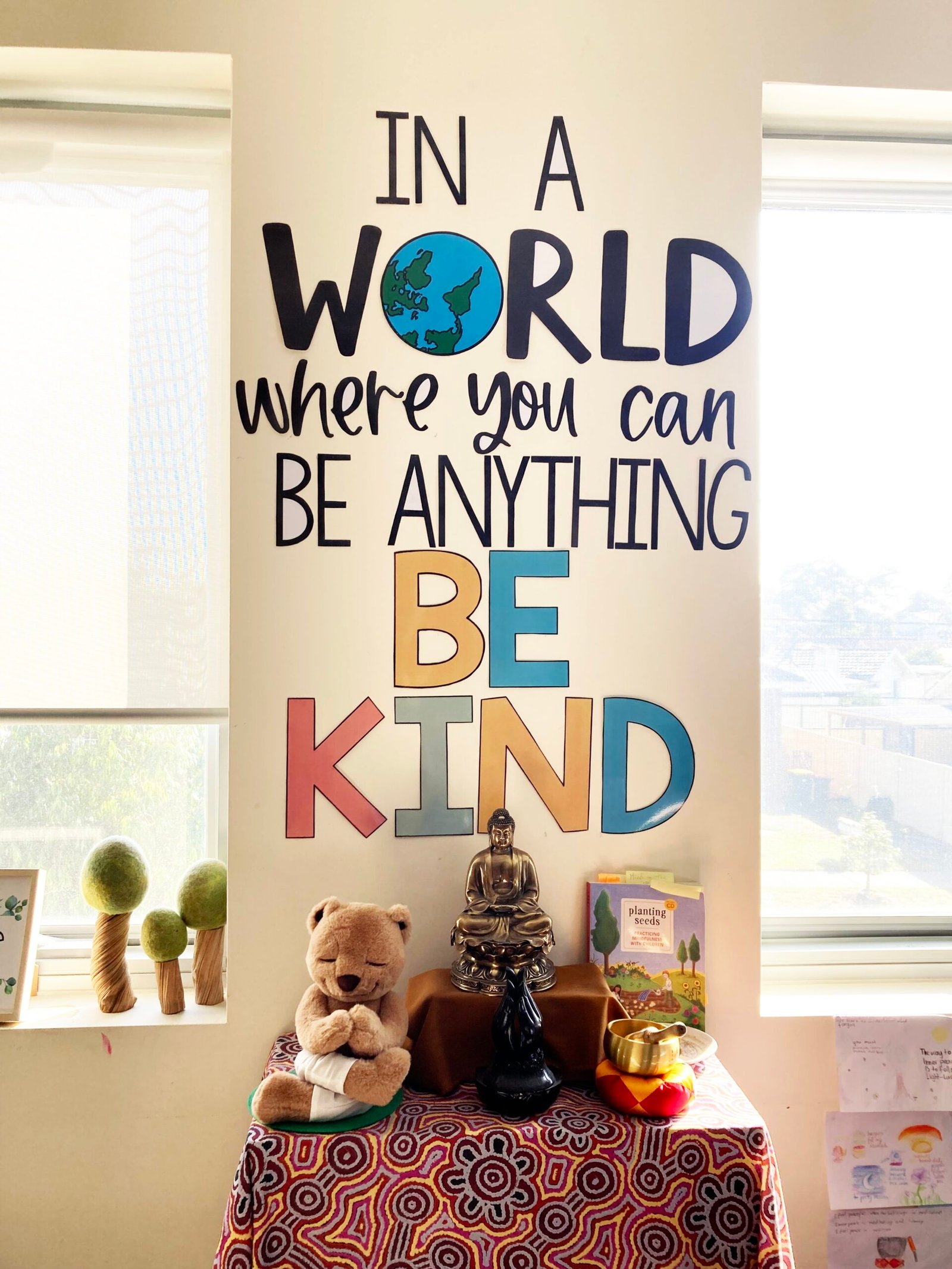The “Buddhism in Australia” research team travelled south to Launceston, Tasmania on 28th March 2025 for the fourth round of fieldwork. Anna Halafoff and videographer Filip Milovac visited the Guan Di Temple located within the Queen Victoria Museum, where they interviewed museum curator Jon Addison and Chinese-Australian descendant Jan Everett. The team also visited a historic Chinese cemetery in the state’s northeast to document traces of early Chinese presence.

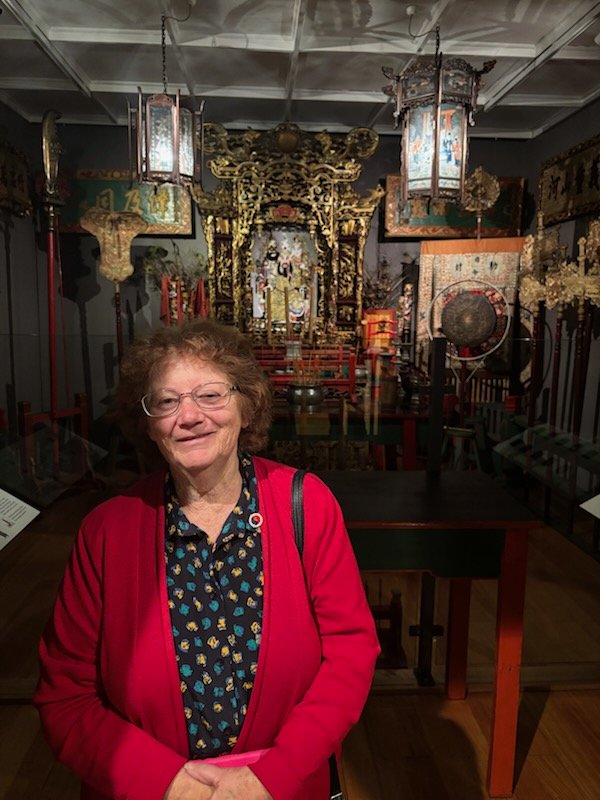

On 9 April, Venerable Juewei, Kim Lam and video producer Freeman Trebilcock joined the team in Melbourne. The team’s first stop was the Hoa Nghiem Buddhist College in Springvale. Venerable Juewei interviewed the college’s founder, Most Venerable Thich Thien Tam, and its principal, Venerable Thich Phuoc Uyen. Inspired by Venerable Master Hsing Yun’s vision of “nurturing talent through education”, Most Venerable Thich Thien Tam established the school to connect the younger English-speaking generation with the Dharma. Over the decades, the school has overcome many challenges, expanding from just two classrooms to a full building with 16 staff members, including a preschool and primary school, with hopes to establish a high school in the future. The school integrates the Victorian curriculum with Buddhist teachings to nurture students with both compassion and wisdom

At the Buddhaloka Centre of Buddhist Society of Victoria (BSV), we interviewed Indra, the president of its youth group BSV Cityzen, and social media coordinator Selena, to learn how the organisation offers youths a place to engage socially, build friendships and apply Buddhist teachings in daily life.
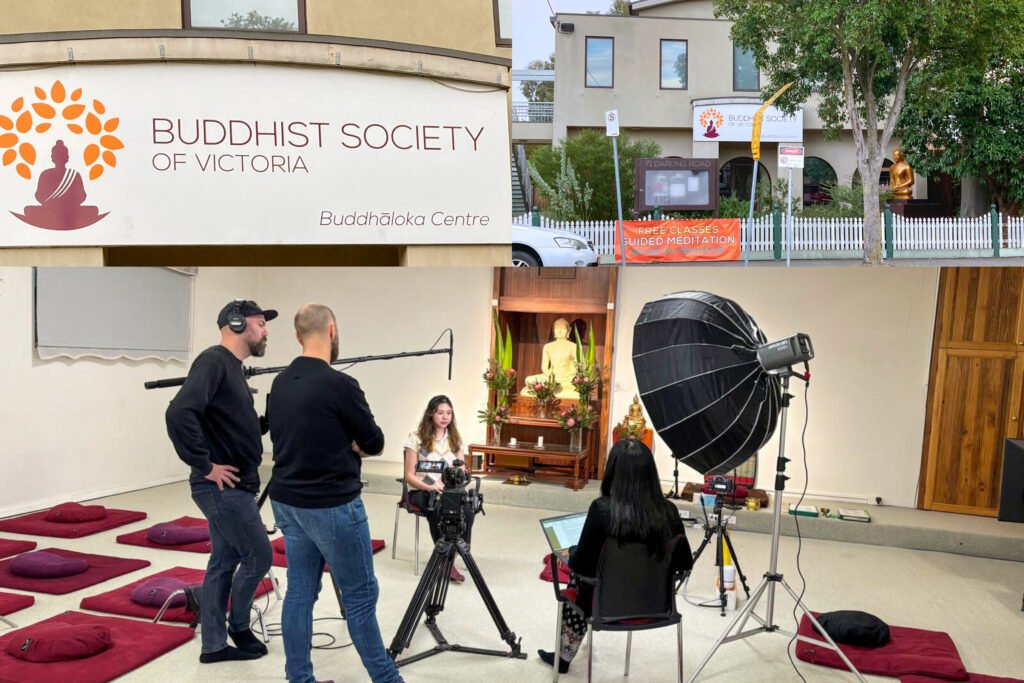
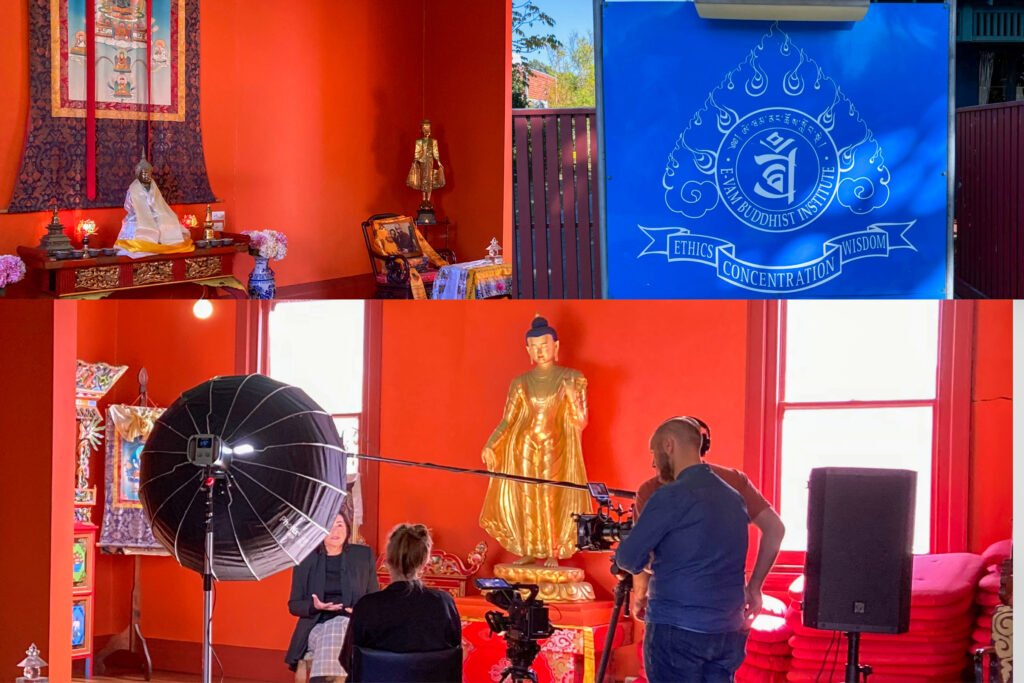
At the E-Vam Institute in Melbourne—established in 1982—Felicity shared how she continues the vision of founder Traleg Kyabgon Rinpoche IX, maintaining an institute focused on the study, contemplation, and practice of Dharma.
The next day we travelled from the city to Newbury Buddhist Monastery, established by BSV in 2015. The monastery offers a modern and serene space for the fourfold assembly to practise. Senior monk Ajahn Nissarano shared the process of establishing the “Sanctuary of Stillness” (SOS) retreat centre with the research team.

On 11 April, the team travelled to Bendigo, a major site that attracted many Chinese migrants during the gold rush. The Bendigo Joss House Temple, built in 1871, is the only surviving one of four such temples built in the 19th century. While the temple primarily enshrines Guan Gong (Guan Di), there is also an altar dedicated to Guanyin Bodhisattva, as well as Buddha statues, lanterns with the Chinese character for “Buddha,” and plaques with Chan aphorisms. Nonetheless, the origin and dating of these Buddhist artefacts remain unclear due to limited documentation in the past.
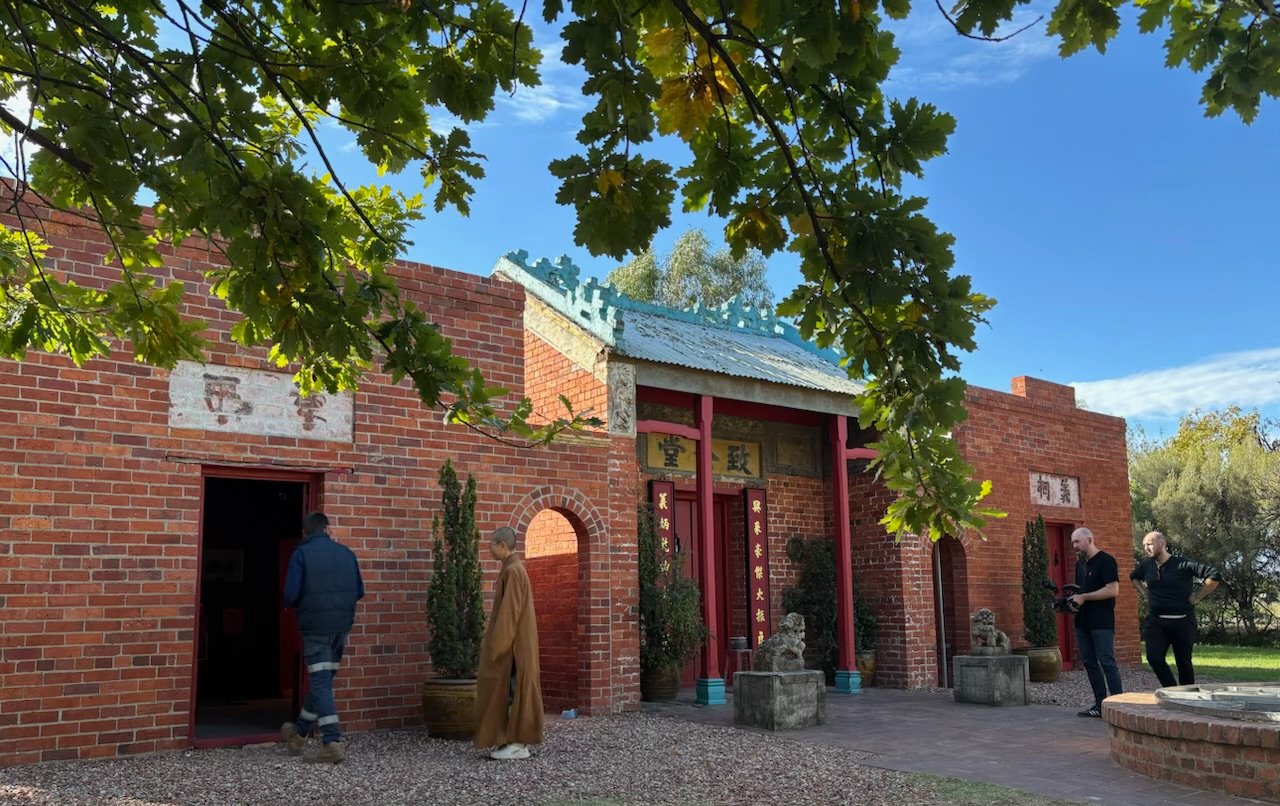
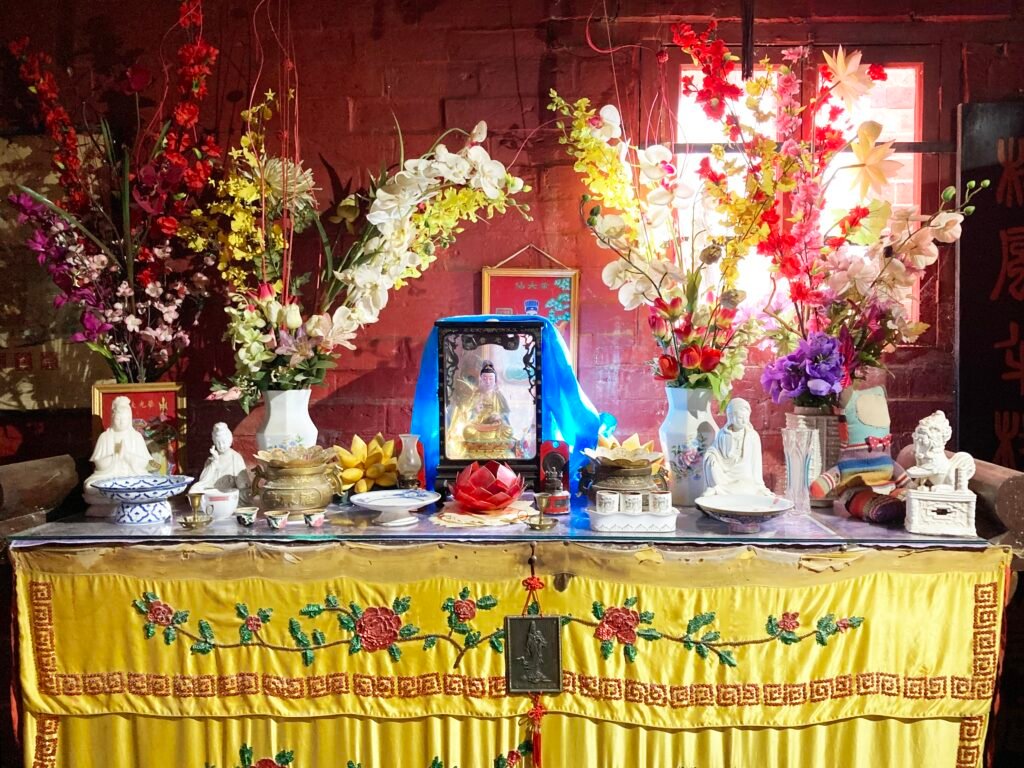
A major Buddhist landmark in Bendigo is the Great Stupa of Universal Compassion. At 50 metres square at its base and nearly 50 metres high, it is the largest stupa in the Western world. It houses the Jade Buddha for Universal Peace, the largest Buddha carved from gemstone quality jade in the world, which has toured 120 cities across 20 countries. Outside the Stupa, the interfaith garden in Peace Park displays symbols of multiple religions, embodying interfaith harmony and multicultural coexistence.
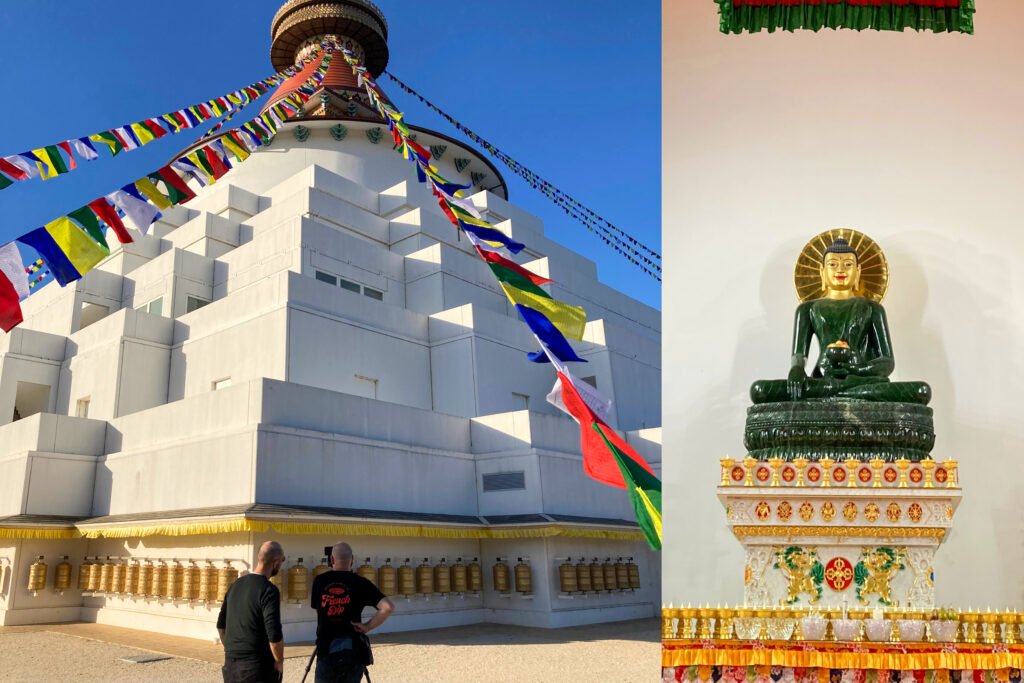
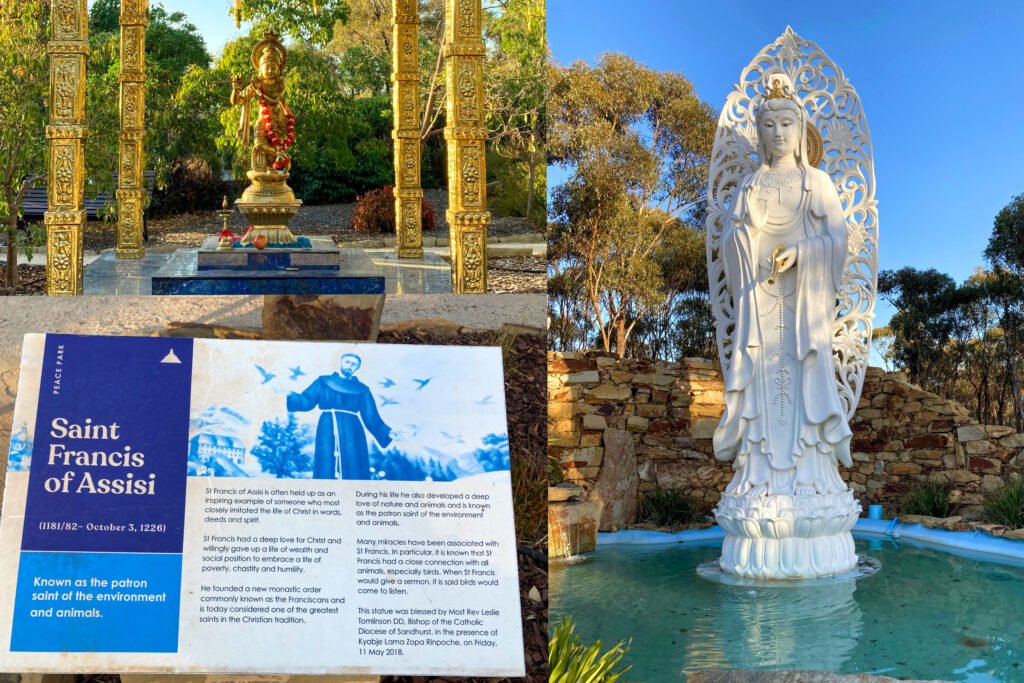

At the Daylesford Dharma School, founding principal Andrea Furness explained that the school, established in 2009, is the first Buddhist primary school in Australia. It follows the national curriculum and has developed an Australian Dharma Curriculum, featuring distinctive teaching methods such as noble silence, mindful pauses, the Five Mindfulness Trainings (based on the Five Precepts), and bush school programs. Currently operating from temporary facilities, the school hopes to build permanent structures on its 22-acre property in the near future.
Venerable Juewei expressed her admiration for the dedication of the Buddhist educators she has met on this trip, saying she saw hope for the future in their efforts.

